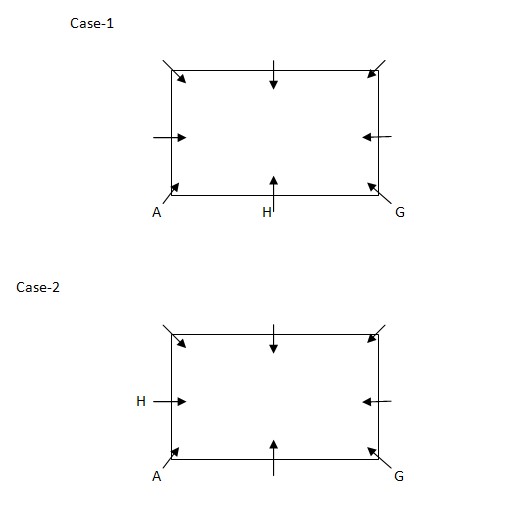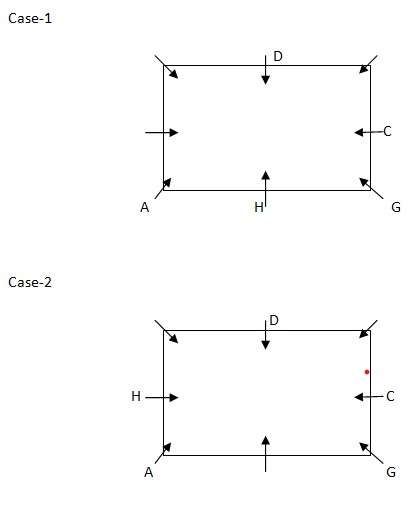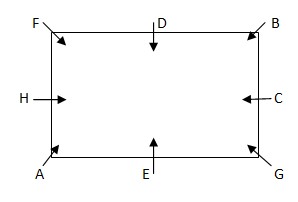Question
Who among the following person sits opposite to
F? Study the following information carefully and answer the below questions Eight persons – A, B, C, D, E, F, G and H are sitting in the square table such that all of them are facing towards the center. Four persons are sitting in the middle of the sides of the table and four persons are sitting at the corner of the table. All the information is not necessarily in the same order. A sits second to the left of G, who sits at one of the corner of the table. H sits either to the immediate right or to the immediate left of A. D sits opposite to the one who sits second to the left of C. C sits in the middle of the sides of table. D is neither the immediate neighbor of G nor A. E is the immediate neighbor of either of A or F, but not the both. B sits second to the left of F.Solution
A sits second to the left of G, who sits at one of the corner of the table. H sits either to the immediate right or to the immediate left of A. From the above condition, there are two possibilities.  D sits opposite to the one who sits second to the left of C. C sits in the middle of the sides of table. D is neither the immediate neighbor of G nor A
D sits opposite to the one who sits second to the left of C. C sits in the middle of the sides of table. D is neither the immediate neighbor of G nor A  E is the immediate neighbor of either of A or F, but not the both. B sits second to the left of F. From the above condition, case1 gets eliminated. Case 2 shows the final arrangement.
E is the immediate neighbor of either of A or F, but not the both. B sits second to the left of F. From the above condition, case1 gets eliminated. Case 2 shows the final arrangement. 
टैगोर की ( 1) / कृतियों का ( 2) / अनुवाद ( 3) / किया गया ( 4) / हिन्दी (...
निम्नलिखित वाक्य में कुछ अक्षर/शब्द मोटे अक्षरों में दर्�...
नीचे दिया गया प्रत्येक वाक्य चार भागों में बांटा गया है ज�...
निम्नलिखित प्रत्येक प्रश्न में दिये गये चार - चार विकल्पो...
इस ( 1) / पुस्तक में ( 2) / संकलित ( 3) / मेरी ( 4) / दो कविताएँ ( 5) / है ( 6...
निम्नलिखित वाक्य में कुछ अक्षर/शब्द मोटे अक्षरों में दर्�...
आप अपराधी के प्रतिकूल (a ) / गवाही दें क्योंकि (b ) / उसने दंड...
निम्नलिखित प्रत्येक प्रश्न में दिये गये चार - चार विकल्पो...
नीचे दिया गया वाक्य चार भागों में बाँटा गया है ( A), (B), (C), और ( D) �...
निम्नलिखित वाक्य में कुछ अक्षर/शब्द मोटे अक्षरों में दर्�...
Relevant for Exams:


